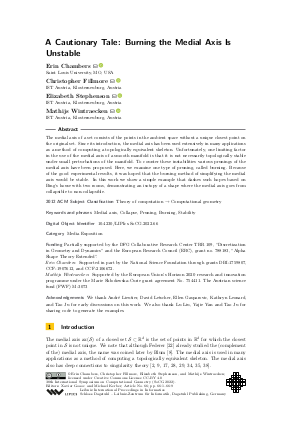LIPIcs.SoCG.2022.66.pdf
- Filesize: 16.76 MB
- 9 pages

 Creative Commons Attribution 4.0 International license
Creative Commons Attribution 4.0 International license












Feedback for Dagstuhl Publishing